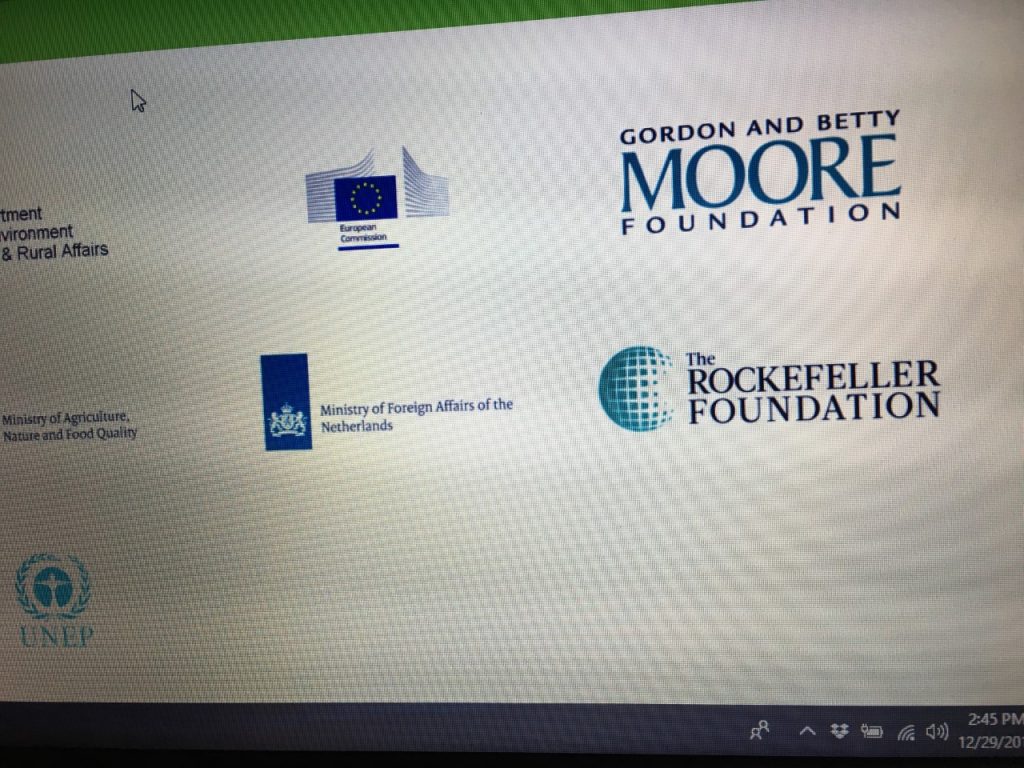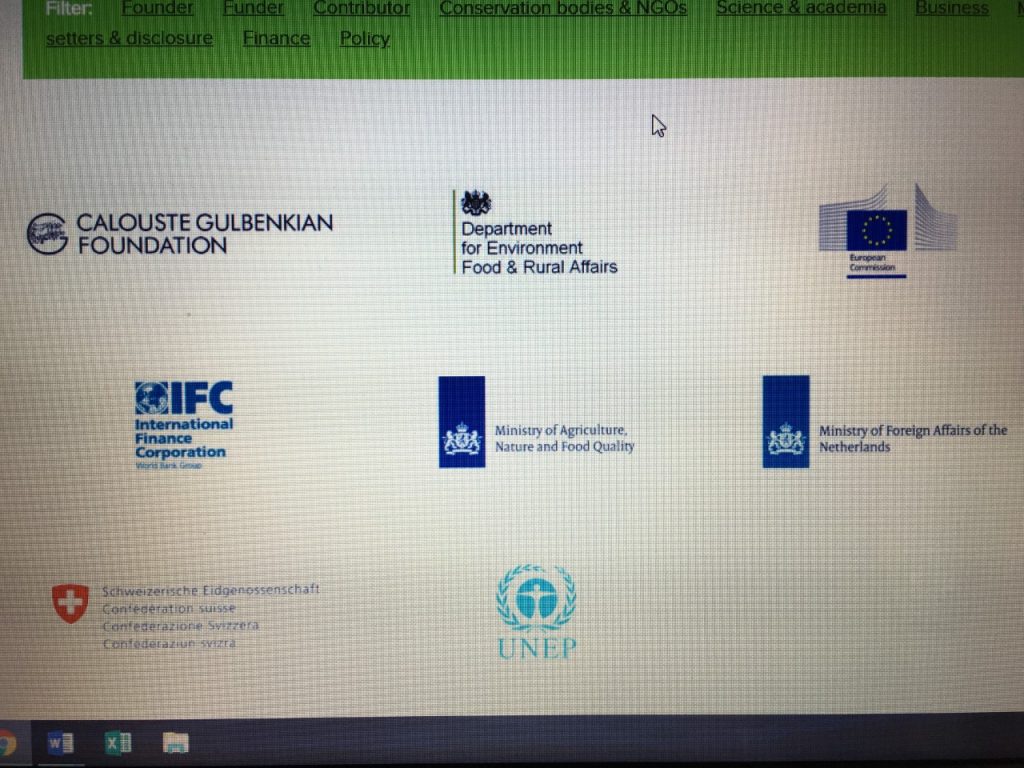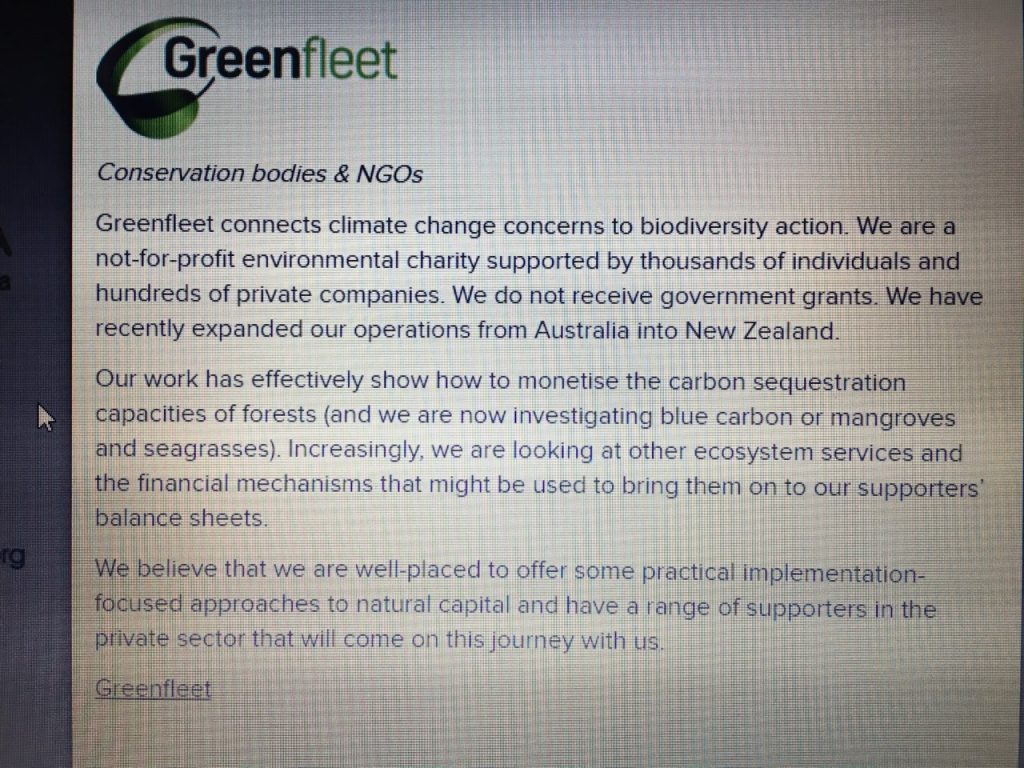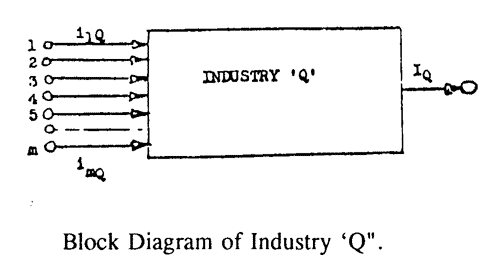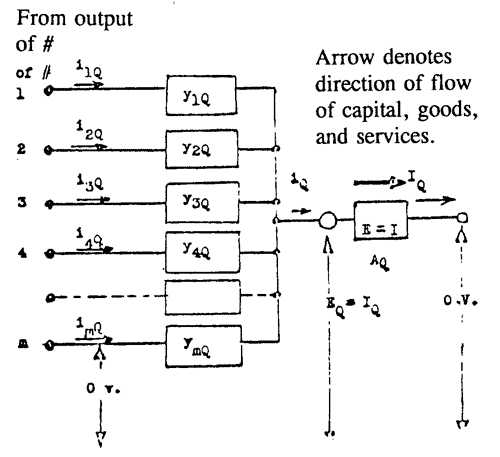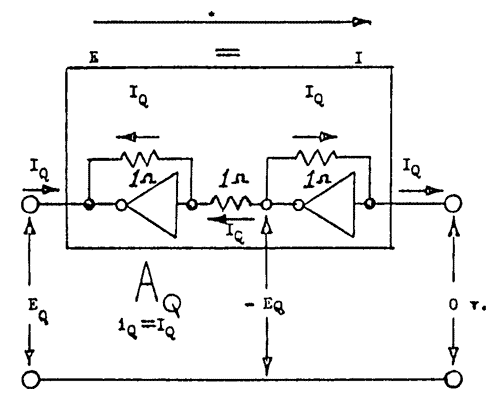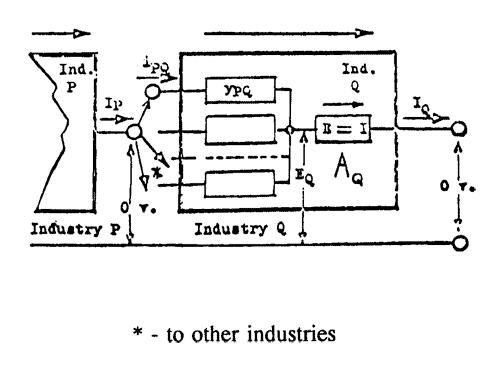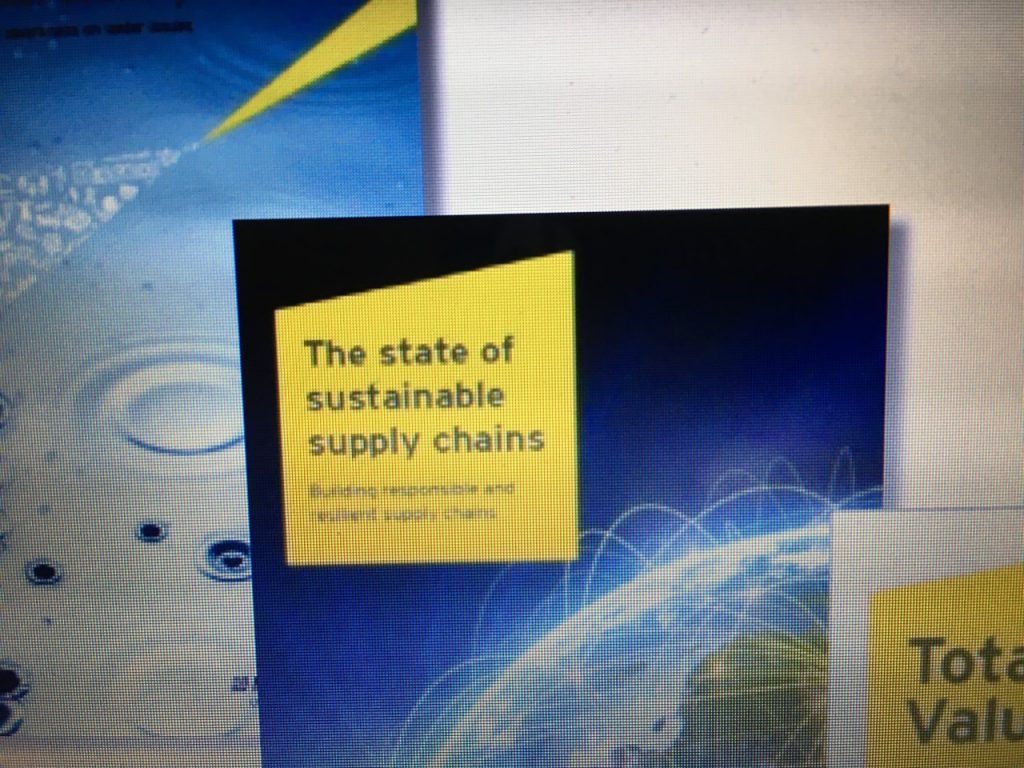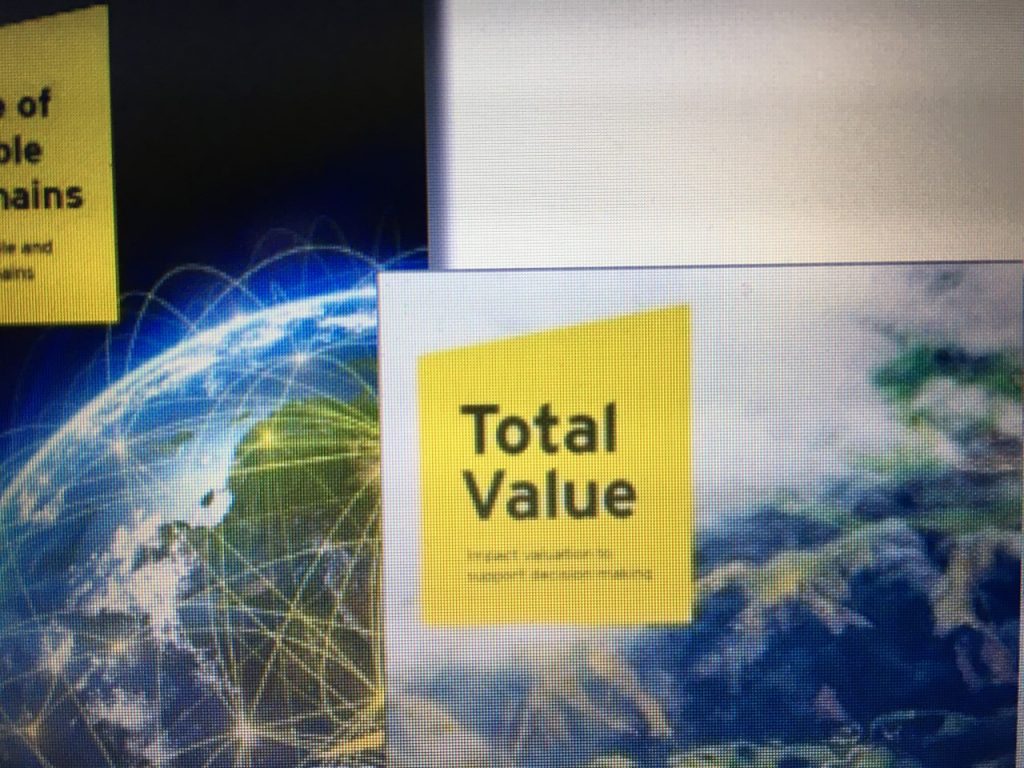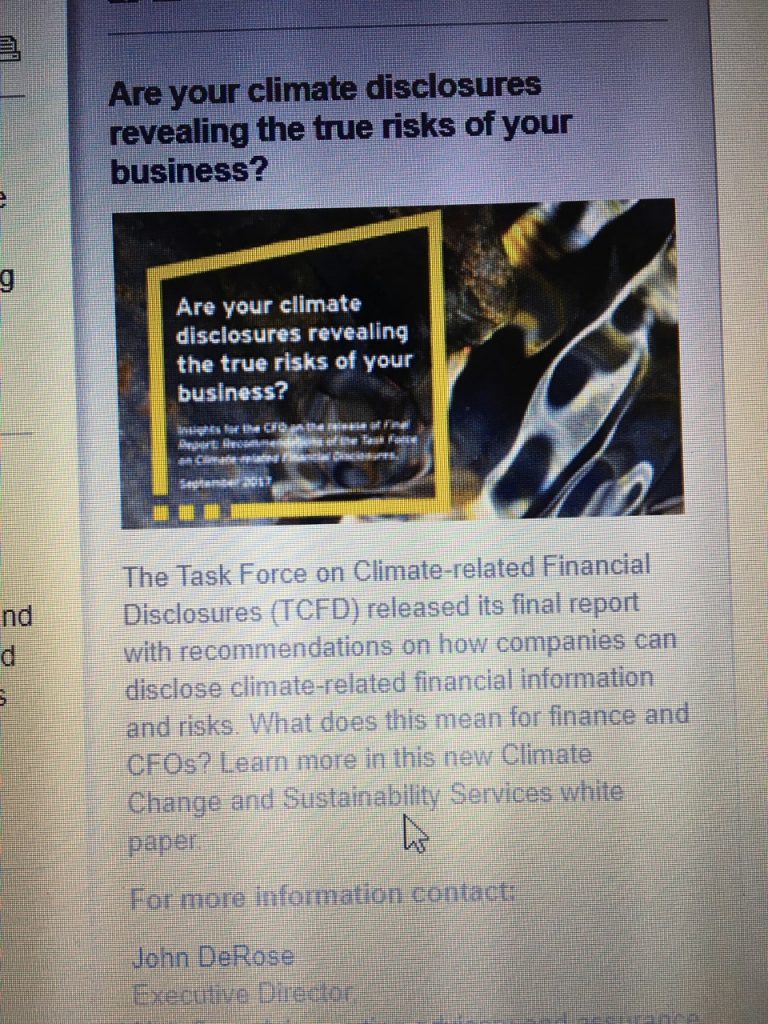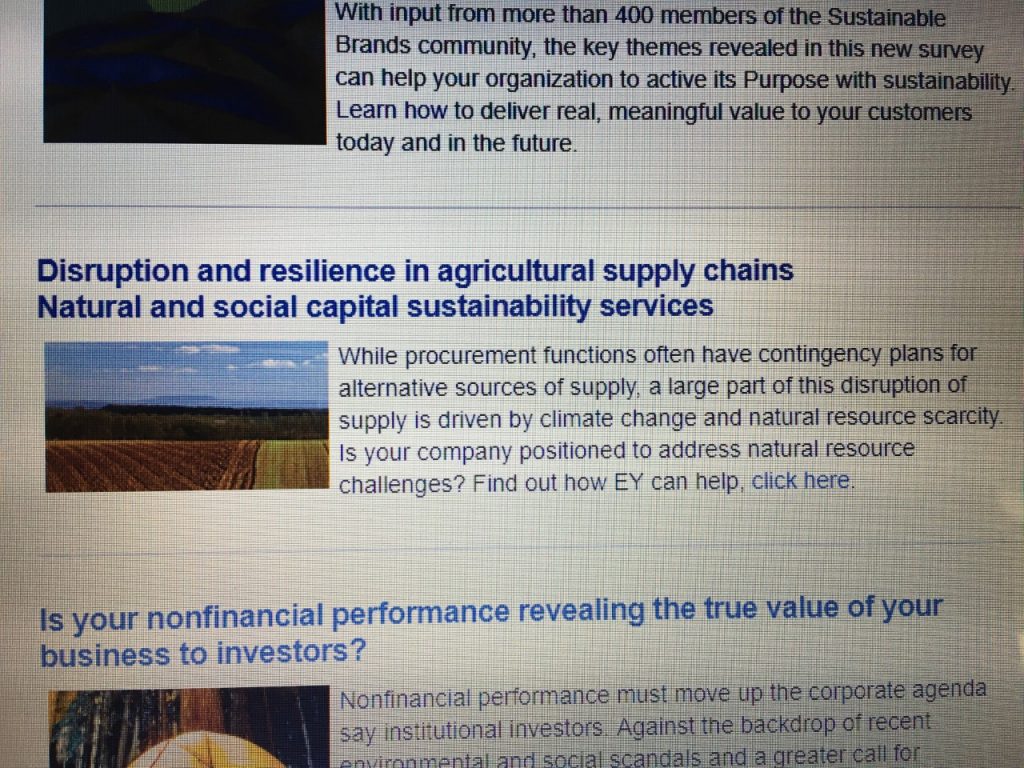Category: INVENTORY and CONTROL
Ernst & Young – One World Financial Value Determiner for EARTH, INC.
The site below is about how there is a Natural Capital Coalition for valuing “Natural Capital” – a.k.a. everything earth has like air, water, soil, potential for crops, etc. They are
The Natural Capital Coalition is an international collaboration that unites the global natural capital community.Natural Capital Coalition Organizations include: The Rockefeller Foundation and UNEP (United Nation Environment Program). Maurice Strong founded the UNEP).
This is NATURAL CAPITAL and the COALITION . . .
Silent Weapons for Quiet Wars – 1
https://stopthecrime.net/docs/SILENT%20WEAPONS%20for%20QUIET%20WARS.pdf
https://shop.arccopy.com/Silent-Weapons-for-Quiet-Wars-02.htm
The following document, dated May 1979, was found on July 7, 1986,
in an IBM copier that had been purchased at a surplus sale.
TOP SECRET
Silent Weapons for Quiet Wars
Operations Research Technical Manual TM-SW7905.1
Welcome Aboard,
This publication marks the 25th anniversary of the Third World War, called the “Quiet War“, being conducted using subjective biological warfare, fought with “silent weapons.”This book contains an introductory description of this war, its strategies, and its weaponry.
May 1979
#74-1120
Security
It is patently impossible to discuss social engineering or the automation of a society, i.e., the engineering of social automation systems (silent weapons) on a national or worldwide scale without implying extensive objectives of social control and destruction of human life, i.e., slavery and genocide.
This manual is in itself an analog declaration of intent. Such a writing must be secured from public scrutiny.
Otherwise, it might be recognized as a technically formal declaration of domestic war. Furthermore, whenever any person or group of persons in a position of great power and without full knowledge and consent of the public, uses such knowledge and methodologies for economic conquest – it must be understood that a state of domestic warfare exists between said person or group of persons and the public.
The solution of today’s problems requires an approach which is ruthlessly candid, with no agonizing over religious, moral or cultural values.
You have qualified for this project because of your ability to look at human society with cold objectivity, and yet analyze and discuss your observations and conclusions with others of similar intellectual capacity without the loss of discretion or humility.
Such virtues are exercised in your own best interest. Do not deviate from them.
Historical Introduction
Silent weapon technology has evolved from Operations Research (O.R.), a strategic and tactical methodology developed under the Military Management in England during World War II. The original purpose of Operations Research was to study the strategic and tactical problems of air and land defense with the objective of effective use of limited military resources against foreign enemies (i.e., logistics).
It was soon recognized by those in positions of power that the same methods might be useful for totally controlling a society. But better tools were necessary.
Social engineering (the analysis and automation of a society) requires the correlation of great amounts of constantly changing economic information (data), so a high-speed computerized data-processing system was necessary which could race ahead of the society and predict when society would arrive for capitulation.
Relay computers were to slow, but the electronic computer, invented in 1946 by J. Presper Eckert and John W. Mauchly, filled the bill.
The next breakthrough was the development of the simplex method of linear programming in 1947 by the mathematician George B. Dantzig.
Then in 1948, the transistor, invented by J. Bardeen, W.H. Brattain, and W. Shockley, promised great expansion of the computer field by reducing space and power requirements.
With these three inventions under their direction, those in positions of power strongly suspected that it was possible for them to control the whole world with the push of a button.
Immediately, the Rockefeller Foundation got in on the ground floor by making a four-year grant to Harvard College, funding the Harvard Economic Research Project for the study of the structure of the American Economy. One year later, in 1949, The United States Air Force joined in.
In 1952 the grant period terminated, and a high-level meeting of the Elite was held to determine the next phase of social operations research. The Harvard project had been very fruitful, as is borne out by the publication of some of its results in 1953 suggesting the feasibility of economic (social) engineering. (Studies in the Structure of the American Economy – copyright 1953 by Wassily Leontief, International Science Press Inc., White Plains, New York).
Engineered in the last half of the decade of the 1940’s, the new Quiet War machine stood, so to speak, in sparkling gold-plated hardware on the showroom floor by 1954.
With the creation of the maser in 1954, the promise of unlocking unlimited sources of fusion atomic energy from the heavy hydrogen in sea water and the consequent availability of unlimited social power was a possibility only decades away. The combination was irresistible.
The Quiet War was quietly declared by the International Elite at a meeting held in 1954.
Although the silent weapons system was nearly exposed 13 years later, the evolution of the new weapon-system has never suffered any major setbacks.
This volume marks the 25th anniversary of the beginning of the Quiet War. Already this domestic war has had many victories on many fronts throughout the world.
Political Introduction
In 1954 it was well recognized by those in positions of authority that it was only a matter of time, only a few decades, before the general public would be able to grasp and upset the cradle of power, for the very elements of the new silent-weapon technology were as accessible for a public utopia as they were for providing a private utopia.
The issue of primary concern, that of dominance, revolved around the subject of the energy sciences.
Energy
Energy is recognized as the key to all activity on earth.
Natural science is the study of the sources and control of natural energy, and social science, theoretically expressed as economics, is the study of the sources and control of social energy. Both are bookkeeping systems: mathematics. Therefore, mathematics is the primary energy science. And the bookkeeper can be king if the public can be kept ignorant of the methodology of the bookkeeping.
All science is merely a means to an end. The means is knowledge. The end is control. Beyond this remains only one issue: Who will be the beneficiary?
In 1954 this was the issue of primary concern. Although the so-called “moral issues” were raised, in view of the law of natural selection it was agreed that a nation or world of people who will not use their intelligence are no better than animals who do not have intelligence. Such people are beasts of burden and steaks on the table by choice and consent.
Consequently, in the interest of future world order, peace, and tranquility, it was decided to privately wage a quiet war against the American public with an ultimate objective of permanently shifting the natural and social energy (wealth) of the undisciplined and irresponsible many into the hands of the self-disciplined, responsible, and worthy few.
In order to implement this objective, it was necessary to create, secure, and apply new weapons which, as it turned out, were a class of weapons so subtle and sophisticated in their principle of operation and public appearance as to earn for themselves the name “silent weapons.”
In conclusion, the objective of economic research, as conducted by the magnates of capital (banking) and the industries of commodities (goods) and services, is the establishment of an economy which is totally predictable and manipulatable.
In order to achieve a totally predictable economy, the low-class elements of society must be brought under total control, i.e., must be housebroken, trained, and assigned a yoke and long-term social duties from a very early age, before they have an opportunity to question the propriety of the matter. In order to achieve such conformity, the lower-class family unit must be disintegrated by a process of increasing preoccupation of the parents and the establishment of government-operated day-care centers for the occupationally orphaned children.
The quality of education given to the lower class must be of the poorest sort, so that the moat of ignorance isolating the inferior class from the superior class is and remains incomprehensible to the inferior class. With such an initial handicap, even bright lower class individuals have little if any hope of extricating themselves from their assigned lot in life.
This form of slavery is essential to maintain some measure of social order, peace, and tranquility for the ruling upper class.
Descriptive Introduction of the Silent Weapon
Everything that is expected from an ordinary weapon is expected from a silent weapon by its creators, but only in its own manner of functioning.
It shoots situations, instead of bullets; propelled by data processing, instead of chemical reaction (explosion); originating from bits of data, instead of grains of gunpowder; from a computer, instead of a gun; operated by a computer programmer, instead of a marksman; under the orders of a banking magnate, instead of a military general.
It makes no obvious explosive noises, causes no obvious physical or mental injuries, and does not obviously interfere with anyone’s daily social life.
Yet it makes an unmistakable “noise,” causes unmistakable physical and mental damage, and unmistakably interferes with the daily social life, i.e., unmistakable to a trained observer, one who knows what to look for.
The public cannot comprehend this weapon, and therefore cannot believe that they are being attacked and subdued by a weapon.
The public might instinctively feel that something is wrong, but that is because of the technical nature of the silent weapon, they cannot express their feeling in a rational way, or handle the problem with intelligence. Therefore, they do not know how to cry for help, and do not know how to associate with others to defend themselves against it.
When a silent weapon is applied gradually, the public adjusts/adapts to its presence and learns to tolerate its encroachment on their lives until the pressure (psychological via economic) becomes too great and they crack up.
Therefore, the silent weapon is a type of biological warfare. It attacks the vitality, options, and mobility of the individuals of a society by knowing, understanding, manipulating, and attacking their sources of natural and social energy, and their physical, mental, and emotional strengths and weaknesses.
Theoretical Introduction
Give me control over a nation’s currency, and I care not who makes its laws.
— Mayer Amschel Rothschild, 1743 – 1812)
Today’s silent weapons technology is an outgrowth of a simple idea discovered, succinctly expressed, and effectively applied by the quoted Mr. Mayer Amschel Rothschild.
Mr. Rothschild discovered the missing passive component of economic theory known as economic inductance. He, of course, did not think of his discovery in these 20th-century terms, and, to be sure, mathematical analysis had to wait for the Second Industrial Revolution, the rise of the theory of mechanics and electronics, and finally, the invention of the electronic computer before it could be effectively applied in the control of the world economy.
General Energy Concepts
In the study of energy systems, there always appears three elementary concepts.
These are potential energy, kinetic energy, and energy dissipation. And corresponding to these concepts, there are three idealized, essentially pure physical counterparts called passive components.
- In the science of physical mechanics, the phenomenon of potential energy is associated with a physical property called elasticity or stiffness, and can be represented by a stretched spring.
- In electronic science, potential energy is stored in a capacitor instead of a spring. This property is called capacitance instead of elasticity or stiffness.
- In the science of physical mechanics, the phenomenon of kinetic energy is associated with a physical property called inertia or mass, and can be represented by a mass or a flywheel in motion.
- In electronic science, kinetic energy is stored in an inductor (in a magnetic field) instead of a mass. This property is called inductance instead of inertia.
- In the science of physical mechanics, the phenomenon of energy dissipation is associated with a physical property called friction or resistance, and can be represented by a dashpot or other device which converts energy into heat.
- In electronic science, dissipation of energy is performed by an element called either a resistor or a conductor, the term “resistor” being the one generally used to describe a more ideal device (e.g., wire) employed to convey electronic energy efficiently from one location to another. The property of a resistance or conductor is measured as either resistance or conductance reciprocals.
In economics these three energy concepts are associated with:
- – Economic Capacitance
- Capital (money, stock/inventory, investments in buildings and durables, etc.)
- – Economic Conductance
- Goods (production flow coefficients)
- – Economic Inductance
- Services (the influence of the population of industry on output)
All of the mathematical theory developed in the study of one energy system (e.g., mechanics, electronics, etc.) can be immediately applied in the study of any other energy system (e.g., economics).
Mr. Rothchild’s Energy Discovery
What Mr. Rothschild had discovered was the basic principle of power, influence, and control over people as applied to economics. That principle is “when you assume the appearance of power, people soon give it to you.”
Mr. Rothschild had discovered that currency or deposit loan accounts had the required appearance of power that could be used to induce people (inductance, with people corresponding to a magnetic field) into surrendering their real wealth in exchange for a promise of greater wealth (instead of real compensation). They would put up real collateral in exchange for a loan of promissory notes.
Mr. Rothschild found that he could issue more notes than he had backing for, so long as he had someone’s stock of gold as a persuader to show his customers.
Mr. Rothschild loaned his promissory notes to individual and to governments. These would create overconfidence. Then he would make money scarce, tighten control of the system, and collect the collateral through the obligation of contracts. The cycle was then repeated. These pressures could be used to ignite a war.
Then he would control the availability of currency to determine who would win the war. That government which agreed to give him control of its economic system got his support.
Collection of debts was guaranteed by economic aid to the enemy of the debtor.
The profit derived from this economic methodology mad Mr. Rothschild all the more able to expand his wealth. He found that the public greed would allow currency to be printed by government order beyond the limits (inflation) of backing in precious metal or the production of goods and services.
Apparent Capital as “Paper” Inductor
In this structure, credit, presented as a pure element called “currency,” has the appearance of capital, but is in effect negative capital.
Hence, it has the appearance of service, but is in fact, indebtedness or debt. It is therefore an economic inductance instead of an economic capacitance, and if balanced in no other way, will be balanced by the negation of population (war, genocide).
The total goods and services represent real capital called the gross national product, and currency may be printed up to this level and still represent economic capacitance; but currency printed beyond this level is subtractive, represents the introduction of economic inductance, and constitutes notes of indebtedness.
War is therefore the balancing of the system by killing the true creditors (the public which we have taught to exchange true value for inflated currency) and falling back on whatever is left of the resources of nature and regeneration of those resources.
Mr. Rothschild had discovered that currency gave him the power to rearrange the economic structure to his own advantage, to shift economic inductance to those economic positions which would encourage the greatest economic instability and oscillation.
The final key to economic control had to wait until there was sufficient data and high-speed computing equipment to keep close watch on the economic oscillations created by price shocking and excess paper energy credits – paper inductance/inflation.
Breakthrough
The aviation field provided the greatest evolution in economic engineering by way of the mathematical theory of shock testing.
In this process, a projectile is fired from an airframe on the ground and the impulse of the recoil is monitored by vibration transducers connected to the airframe and wired to chart recorders.
By studying the echoes or reflections of the recoil impulse in the airframe, it is possible to discover critical vibrations in the structure of the airframe which either vibrations of the engine or aeolian vibrations of the wings, or a combination of the two, might reinforce resulting in a resonant self-destruction of the airframe in flight as an aircraft.
From the standpoint of engineering, this means that the strengths and weaknesses of the structure of the airframe in terms of vibrational energy can be discovered and manipulated.
Application in Economics
To use this method of airframe shock testing in economic engineering, the prices of commodities are shocked, and the public consumer reaction is monitored.
The resulting echoes of the economic shock are interpreted theoretically by computers and the psycho-economic structure of the economy is thus discovered. It is by this process that partial differential and difference matrices are discovered that define the family household and make possible its evaluation as an economic industry (dissipative consumer structure).
Then the response of the household to future shocks can be predicted and manipulated, and society becomes a well-regulated animal with its reins under the control of a sophisticated computer-regulated social energy bookkeeping system.
Eventually every individual element of the structure comes under computer control through a knowledge of personal preferences, such knowledge guaranteed by computer association of consumer preferences (universal product code, UPC; zebra-striped pricing codes on packages) with identified consumers (identified via association with the use of a credit card and later a permanent “tattooed” body number invisible under normal ambient illumination).
The Economic Model
The Harvard Economic Research Project (1948-) was an extension of World War II Operations Research. Its purpose was to discover the science of controlling an economy: at first the American economy, and then the world economy.
It was felt that with sufficient mathematical foundation and data, it would be nearly as easy to predict and control the trend of an economy as to predict and control the trajectory of a projectile. Such has proven to be the case. Moreover, the economy has been transformed into a guided missile on target.
The immediate aim of the Harvard project was to discover the economic structure, what forces change that structure, how the behavior of the structure can be predicted, and how it can be manipulated. What was needed was a well-organized knowledge of the mathematical structures and interrelationships of investment, production, distribution, and consumption.
To make a short story of it all, it was discovered that an economy obeyed the same laws as electricity and that all of the mathematical theory and practical and computer know-how developed for the electronic field could be directly applied in the study of economics.
This discovery was not openly declared, and its more subtle implications were and are kept a closely guarded secret, for example that in an economic model, human life is measured in dollars, and that the electric spark generated when opening a switch connected to an active inductor is mathematically analogous to the initiation of war.
The greatest hurdle which theoretical economists faced was the accurate description of the household as an industry. This is a challenge because consumer purchases are a matter of choice which in turn is influenced by income, price, and other economic factors.
This hurdle was cleared in an indirect and statistically approximate way by an application of shock testing to determine the current characteristics, called current technical coefficients, of a household industry
Finally, because problems in theoretical electronics can be translated very easily into problems of theoretical electronics, and the solution translated back again, it follows that only a book of language translation and concept definition needed to be written for economics. The remainder could be gotten from standard works on mathematics and electronics.
This makes the publication of books on advanced economics unnecessary, and greatly simplifies project security.
Industrial Diagrams
An ideal industry is defined as a device which receives value from other industries in several forms and converts them into one specific product for sales and distribution to other industries.
It has several inputs and one output. What the public normally thinks of as one industry is really an industrial complex, where several industries under one roof produce one or more products.
A pure (single output) industry can be represented oversimplify by a circuit block as follows:

The flow of product from industry #1 (supply) to industry #2 (demand) is denoted by 112. The total flow out of industry “K” is denoted by Ik (sales, etc.).
A three industry network can be diagrammed as follows:
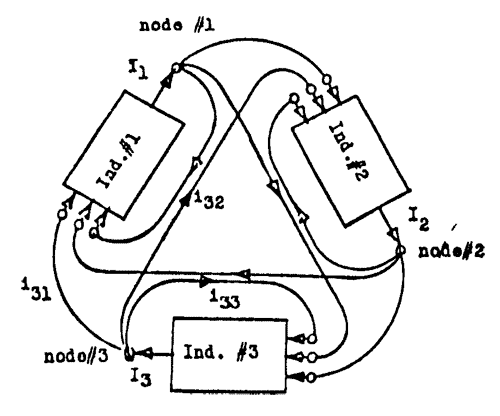
A node is a symbol of collection and distribution of flow. Node #3 receives from industry #3 and distributes to industries #1 and #3.
If industry #3 manufactures chairs, then a flow from industry #3 back to industry #3 simply indicates that industry #3 is using part of its own output product, for example, as office furniture.
Therefore the flow may be summarized by the equations:
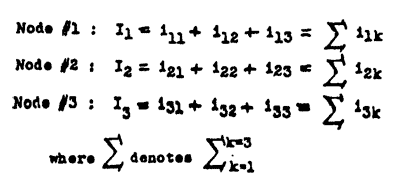
Three Industrial Classes
Industries fall into three categories or classes by type of output:
- Class #1 – Capital (resources)
- Class #2 – Goods (commodities or use – dissipative)
- Class #3 – Services (action of population)
- Class #1 industries exist at three levels:
- Nature – sources of energy and raw materials.
- Government – printing of currency equal to the gross national product (GNP), and extension of currency in excess of GNP.
- Banking – loaning of money for interest, and extension (inflation/counterfeiting) of economic value through the deposit loan accounts.
- Class #2 industries exist as producers of tangible or consumer (dissipated) products. This sort of activity is usually recognized and labeled by the public as “industry.”
- Class #3 industries are those which have service rather than a tangible product as their output. These industries are called (1) households, and (2) governments. Their output is human activity of a mechanical sort, and their basis is population.
Up
Aggregation
The whole economic system can be represented by a three-industry model if one allows the names of the outputs to be (1) capital, (2) goods, and (3) services.
The problem with this representation is that it would not show the influence, say, the textile industry on the ferrous metal industry.
This is because both the textile industry and the ferrous metal industry would be contained within a single classification called the “goods industry” and by this process of combining or aggregating these two industries under one system block they would lose their economic individuality.
The E-Model
A national economy consists of simultaneous flows of production, distribution, consumption, and investment.
If all of these elements including labor and human functions are assigned a numerical value in like units of measure, say, 1939 dollars, then this flow can be further represented by a current flow in an electronic circuit, and its behavior can be predicted and manipulated with useful precision.
The three ideal passive energy components of electronics, the capacitor, the resistor, and the inductor correspond to the three ideal passive energy components of economics called the pure industries of capital, goods, and services, respectively.
- Economic capacitance represents the storage of capital in one form or another.
- Economic conductance represents the level of conductance of materials for the production of goods.
- Economic inductance represents the inertia of economic value in motion. This is a population phenomenon known as services.
Up
Economic Inductance
An electrical inductor (e.g., a coil or wire) has an electric current as its primary phenomenon and a magnetic field as its secondary phenomenon (inertia).
Corresponding to this, an economic inductor has a flow of economic value as its primary phenomenon and a population field as its secondary field phenomenon of inertia. When the flow of economic value (e.g., money) diminishes, the human population field collapses in order to keep the economic value (money) flowing (extreme case – war).
This public inertia is a result of consumer buying habits, expected standard of living, etc., and is generally a phenomenon of self-preservation.
Inductive Factors to Consider
- Population
- Magnitude of the economic activities of the government
- The method of financing these government activities (See Peter-Paul Principle – inflation of the currency.)
Translation (a few examples will be given.)
- Charge
- coulombs – dollars (1939).
- Flow/Current
- amperes (coulombs per second) – dollars of flow per year.
- Motivating Force
- volts – dollars (output) demand.
- Conductance
- amperes per volt – dollars of flow per year per dollar demand.
- Capacitance
- coulombs per volt – dollars of production inventory/stock per dollar demand.
Up
Time Flow Relationships and Self-Destructive Oscillations
An ideal industry may be symbolized electronically in various ways.
The simplest way is to represent a demand by a voltage and a supply by a current.
When this is done, the relationship between the two becomes what is called an admittance, which can result from three economic factors: (1) foresight flow, (2) present flow, and (3) hindsight flow.
- Foresight flow is the result of that property of living entities to cause energy (food) to be stored for a period of low energy (e.g., a winter season). It consists of demands made upon an economic system for that period of low energy (winter season).In a production industry it takes several forms, one of which is known as production stock or inventory. In electronic symbology this specific industry demand (a pure capital industry) is represented by capacitance and the stock or resource is represented by a stored charge. Satisfaction of an industry demand suffers a lag because of the loading effect of inventory priorities.
- Present flow ideally involves no delays.It is, so to speak, input today for output today, a “hand to mouth” flow. In electronic symbology, this specific industry demand (a pure us industry) is represented by a conductance which is then a simple economic valve (a dissipative element).
- Hindsight flow is known as habit or inertia.In electronics this phenomenon is the characteristic of an inductor (economic analog = a pure service industry) in which a current flow (economic analog = flow of money) creates a magnetic field (economic analog = active human population) which, if the current (money flow) begins to diminish, collapse (war) to maintain the current (flow of money – energy).
Other large alternatives to war as economic inductors or economic flywheels are an open-ended social welfare program, or an enormous (but fruitful) open-ended space program.
The problem with stabilizing the economic system is that there is too much demand on account of (1) too much greed and (2) too much population.
This creates excessive economic inductance which can only be balanced with economic capacitance (true resources or value – e.g., in goods or services).
The social welfare program is nothing more than an open-ended credit balance system which creates a false capital industry to give nonproductive people a roof over their heads and food in their stomachs. This can be useful, however, because the recipients become state property in return for the “gift,” a standing army for the elite. For he who pays the piper picks the tune.
Those who get hooked on the economic drug, must go to the elite for a fix. In this, the method of introducing large amounts of stabilizing capacitance is by borrowing on the future “credit” of the world. This is a fourth law of motion – onset, and consists of performing an action and leaving the system before the reflected reaction returns to the point of action – a delayed reaction.
The means of surviving the reaction is by changing the system before the reaction can return. By this means, politicians become more popular in their own time and the public pays later. In fact, the measure of such a politician is the delay time.
The same thing is achieved by a government by printing money beyond the limit of the gross national product, and economic process called inflation. This puts a large quantity of money into the hands of the public and maintains a balance against their greed, creates a false self-confidence in them and, for awhile, stays the wolf from the door.
They must eventually resort to war to balance the account, because war ultimately is merely the act of destroying the creditor, and the politicians are the publicly hired hit men that justify the act to keep the responsibility and blood off the public conscience. (See section on consent factors and social-economic structuring.)
If the people really cared about their fellow man, they would control their appetites (greed, procreation, etc.) so that they would not have to operate on a credit or welfare social system which steals from the worker to satisfy the bum.
Since most of the general public will not exercise restraint, there are only two alternatives to reduce the economic inductance of the system.
- Let the populace bludgeon each other to death in war, which will only result in a total destruction of the living earth.
- Take control of the world by the use of economic “silent weapons” in a form of “quiet warfare” and reduce the economic inductance of the world to a safe level by a process of benevolent slavery and genocide.
The latter option has been taken as the obviously better option.
At this point it should be crystal clear to the reader why absolute secrecy about the silent weapons is necessary. The general public refuses to improve its own mentality and its faith in its fellow man. It has become a herd of proliferating barbarians, and, so to speak, a blight upon the face of the earth.
They do not care enough about economic science to learn why they have not been able to avoid war despite religious morality, and their religious or self-gratifying refusal to deal with earthly problems renders the solution of the earthly problem unreachable to them.
It is left to those few who are truly willing to think and survive as the fittest to survive, to solve the problem for themselves as the few who really care.
Otherwise, exposure of the silent weapon would destroy our only hope of preserving the seed of the future true humanity…
Up
Industry Equivalent Circuits
The industry ‘Q’ can be given a block symbol as follows:
Terminals #1 through #m are connected directly to the outputs of industries #1 and #m, respectively.
The equivalent circuit of industry ‘Q’ is given as follows:
Characteristics:
All inputs are at zero volts.
A – Amplifier – causes output current IQ to be represented by a voltage EQ. Amplifier delivers sufficient current at EQ to drive all loads Y10 through YmQ and sink all currents i1Q through imQ.
The unit transconductance amplifier AQ is constructed as follows:
* Arrow denotes the direction of the flow of capital, goods, and services. The total demand is given as EQ, where EQ=IQ.
The coupling network YPQ symbolizes the demand which industry Q makes on industry P.
The connective admittance YPQ is called the ‘technical coefficient’ of the industry Q stating the demand of industry Q, called the industry of use, for the output in capital, goods, or services of industry P called the industry of origin.
The flow of commodities from industry P to industry Q is given by iPQ evaluated by the formula:
iPQ = YPQ * EQ
When the admittance YPQ is a simple conductance, this formula takes on the common appearance of Ohm’s Law,
iPQ = gPQ* IQ
The interconnection of a three industry system can be diagrammed as follows. The blocks of the industry diagram can be opened up revealing the technical coefficients, and a much simpler format. The equations of flow are given as follows:

Stages of Schematic Simplification
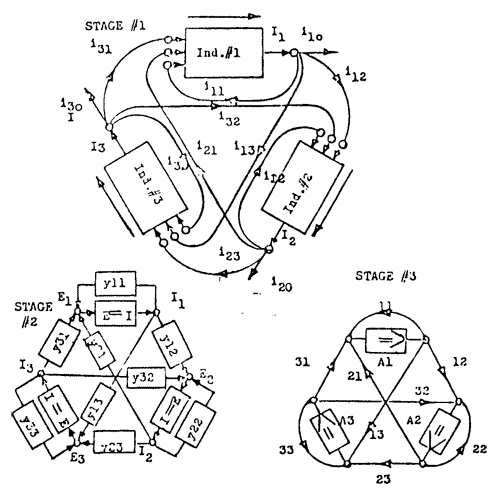
NATURAL CAPITAL COALITION – Price and Inventory EVERYTHING . . .
ERNST & YOUNG – Are Your Climate Disclosures Revealing the True Risks of Your Business?
THE PLAN – to CONtrol ALL Resources and Production by Registering – Inventory – Control of EVERYTHING
Book Quote re: Inventory of ALL Nature – Behind a Green Mask by Rosa KoireRosa Koire has been warning us about the “plan [that] calls for governments to take control of all land use and not leave any of the decision making in the hands of private property owners. It is assumed that people are not good stewards of their land and the government will do a better job if it is in control. Individual rights in general are to give way to the needs of communities as determined by a globalist governing body. Moreover, people should be rounded up off of the land and packed into human settlements or islands of human habitation, as they are called in the UN Agenda 21 documents, close to employment centers and transportation. Another program, called the Wildlands Project, spells out how most of the land is to be set aside for non-humans. In anticipation of our objections to such plans, our civil right will be dissolved.” Additionally, speaking of UN Agenda 21, Ms. Koire says “This plan is a whole life plan. It involves the educational system, the energy market, the transportation system, the governmental system (she says government is now being called ‘GOVERNANCE’), the health care system, food production and more. It is a plan to inventory and control all of the natural resources, means of production, and human beings in the world.”
Ernst & Young LLP: Private Company Information – Bloomberg – SERVICES OFFERED . . .
https://www.bloomberg.com/research/stocks/private/snapshot.asp?privcapId=97518
Professional Services
Company Overview
Ernst & Young LLP is a professional services company. The company provides assurance, auditing, technology and security risk, enterprise risk management, transaction support, merger and acquisition, actuarial, and real estate advisory services. It
also offers employee benefit plan, taxation, and entrepreneurial services. The company provides corporate finance services through its subsidiary, Ernst & Young Corporate Finance. The firm caters to automotive, energy, chemicals, financial, health, real estate, retail, consumer products, and entertainment industries. It is a member firm of Ernst & Young Global Limited. Ernst & Young LLP was founded in 1894 and is based in New York, New York with ad…
5 Times Square
14th Floor
New York, NY 10036-6530
United States
Founded in 1894
Ernst & Young LLP Key Developments
FactSet Research Systems Inc. Ratifies the Appointment of Ernst & Young LLP as Independent Registered Public Accounting Firm for the Fiscal Year Ending August 31, 2019
Dec 20 18
FactSet Research Systems Inc. announced at its AGM held on December 18, 2018, the shareholders ratified the appointment of the accounting firm of Ernst & Young LLP as the company’s independent registered public accounting firm for the fiscal year ending August 31, 2019.
Autozone, Inc. Approves Appointment of Ernst & Young LLP as Independent Registered Public Accounting Firm
Dec 20 18
AutoZone Inc. at its Annual Meeting of Stockholders held on December 19, 2018, approved the designation of Ernst & Young LLP as AutoZone’s independent registered public accounting firm for the fiscal year ending August 31, 2019 was ratified by the stockholders.
Altus Midstream Company Replaces Withumsmith+Brown, PC with Ernst & Young LLP as Independent Public Accountants for the Fiscal Year Ending December 31, 2018
Dec 19 18
Altus Midstream Company upon the recommendation of the Audit Committee of the Board of Directors, resolved to dismiss WithumSmith+Brown, PC as its independent public accountants and to engage Ernst & Young LLP to serve as the Company’s independent public accountants for the fiscal year ending December 31, 2018. This decision followed the consummation of the Company’s initial business combination on November 9, 2018.
Similar Private Companies By Industry
Recent Private Companies Transactions
EY Global Chairman and CEO Mark Weinberger to step down effective July 1, 2019
EY Global Chairman and CEO Mark Weinberger to step down effective July 1, 2019
EY today announces that Mark Weinberger will step down from his role as EY Global Chairman and CEO effective from July 1, 2019 – the start of its financial year 2020.
Read more “EY Global Chairman and CEO Mark Weinberger to step down effective July 1, 2019”
Effective Corporate Governance – About the EY Center for Board Matters – EY – Global
About the EY Center for Board Matters
Effective corporate governance is an important element in building a better working world. In the Americas, the EY Center for Board Matters supports boards, committees and directors in their oversight role by providing content, insights and education to help them address complex boardroom issues. Using our professional competencies, relationships and proprietary corporate governance database, we are able to identify trends and emerging governance issues. This allows us to deliver timely and balanced insights, data-rich content, and practical tools and analysis for directors, institutional investors and other governance stakeholders.
Our distinctive and powerful database
The Center collects and analyzes governance data for more than 3,000 public companies listed in the US through its proprietary corporate governance database. Data covers board and committee composition, organization and leadership structures; director election procedures and board diversity matters; proxy statement disclosure practices; management and shareholder proposals and vote results; and more.
Natural Capital in favor of…from Natural Capital Coalition
FROM NATURAL CAPITAL COALITION WEBSITE
The Moral Question
Some take the position that it’s immoral to ascribe any tangible value to the natural world. But when we buy almost any physical product we are, in a sense, commodifying Nature by signifying our willingness to pay a designated price in exchange for ownership of natural materials, organisms and their derivatives.
In this way, much of Nature is already commodified, and has been for thousands of years. A natural capital approach, far from abetting this neoliberal model, turns it on its head. While there are many prices for the products that are created from Nature and natural derivatives, the value of leaving the natural world intact is often far less understood – or worse, regarded as zero. Framing these resources as natural capital and working to illuminate their value is a way of recognising the value of leaving Nature intact.
Much of the debate comes down to language. In a bid to address some people’s unease with the term ‘ecosystem services’, in January 2018 30 global experts associated with the Intergovernmental Platform on Biodiversity and Ecosystem Services (IPBES) suggested a move away from the term, and towards ‘Nature’s Contributions to People’. They argued the latter was a more inclusive term that bypassed perceived failings of the ecosystem services framing.
IPBES chair Sir Robert Watson said, ‘Nature underpins every person’s wellbeing and ambitions – from health and happiness to prosperity and security. People need to better understand the full value of Nature to ensure its protection and sustainable use.’
Ultimately the message remains the same, irrespective of the language used: we fundamentally depend on Nature in a multitude of ways, and if Nature continues to be degraded, we will all suffer.
Going Mainstream
In March 2007, environment ministers from the G8+5 countries met in Potsdam, Germany to propose a proper analysis of the global economic benefit of biological diversity, the costs of the loss of biodiversity and the failure to take protective measures versus the costs of effective conservation. The result was the launch of a global TEEB (The Economics of Ecosystems and Biodiversity) study, designed to make Nature’s values visible.
As well as getting to grips with the inherent value of our natural bounty, the goal of TEEB is to embed the values and benefits of biodiversity and ecosystem services into decision-making at all levels.
The TEEB for Business Coalition – now the Natural Capital Coalition – was launched in December 2012. Its purpose was to study and standardize natural capital approaches, and enable its valuation and reporting in business. The goal was to engage key stakeholders from business, government and civil society to join a leading-edge collaboration that would shape the future of business thinking and action on natural capital. TEEB for Business evolved into the Natural Capital Coalition in 2014; it had become clear that the entire system – not just business – needed to come together to tackle these issues and embed natural capital thinking in mainstream discourse.
Joining the Dots
Many organisations have a policy on water, another on energy, another on biodiversity, another on forests – the list goes on. Often the people working in these areas don’t talk to each another; in some cases they are actually in competition for budget allocation. A policy on one of these areas, without an understanding of how it connects with the others, means we’re often playing a four-dimensional game of tug of war, attempting to keep interconnected systems in balance without understanding the ways in which they work and connect.
The natural world and ecosystems are fundamentally symbiotic, so our approach to their conservation and restoration must be similarly interconnected if it is to succeed.
A systems approach allows businesses to understand fundamental interdependencies, tipping points and thresholds. If farmers deplete the local water table, the health of local vegetation may be affected; this could cause insect habitats and populations to decrease, affecting the pollination services necessary for the success of the farmers’ crops.
Ernst & Young – One World Financial Value Determiner for EARTH, INC.
The site below is about how there is a Natural Capital Coalition for valuing “Natural Capital” –
a.k.a. everything earth has like air, water, soil, potential for crops, etc.

